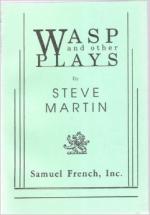|
This section contains 442 words (approx. 2 pages at 400 words per page) |

|
The Absurd
Absurdism in literature first developed at the beginning of the twentieth century, contrasting sharply with the realism that had dominated for much of the previous century in Europe and the United States, in which characters were presented as faithful representations of real persons living real lives. Absurdist literature, by contrastas its apt label suggestsis playful and unrealistic. Absurdism's strange, pathetic, and ridiculous characters suffer both ominous and less painful twists of fate, feeling doleful when happenings are particularly alarming or bad, but on the whole cheerfully hoping for the best. The playfulness and unrealism of absurdism reflects a cautious relativism, a propensity to question and explore problems and ideas instead of espousing systems and delivering final judgments. Absurdist writers attempt to juggle a number of ideas simultaneously, as opposed to narrating the personal lives of their characters. The unexpected and exaggerated nature and behavior of...
|
This section contains 442 words (approx. 2 pages at 400 words per page) |

|




